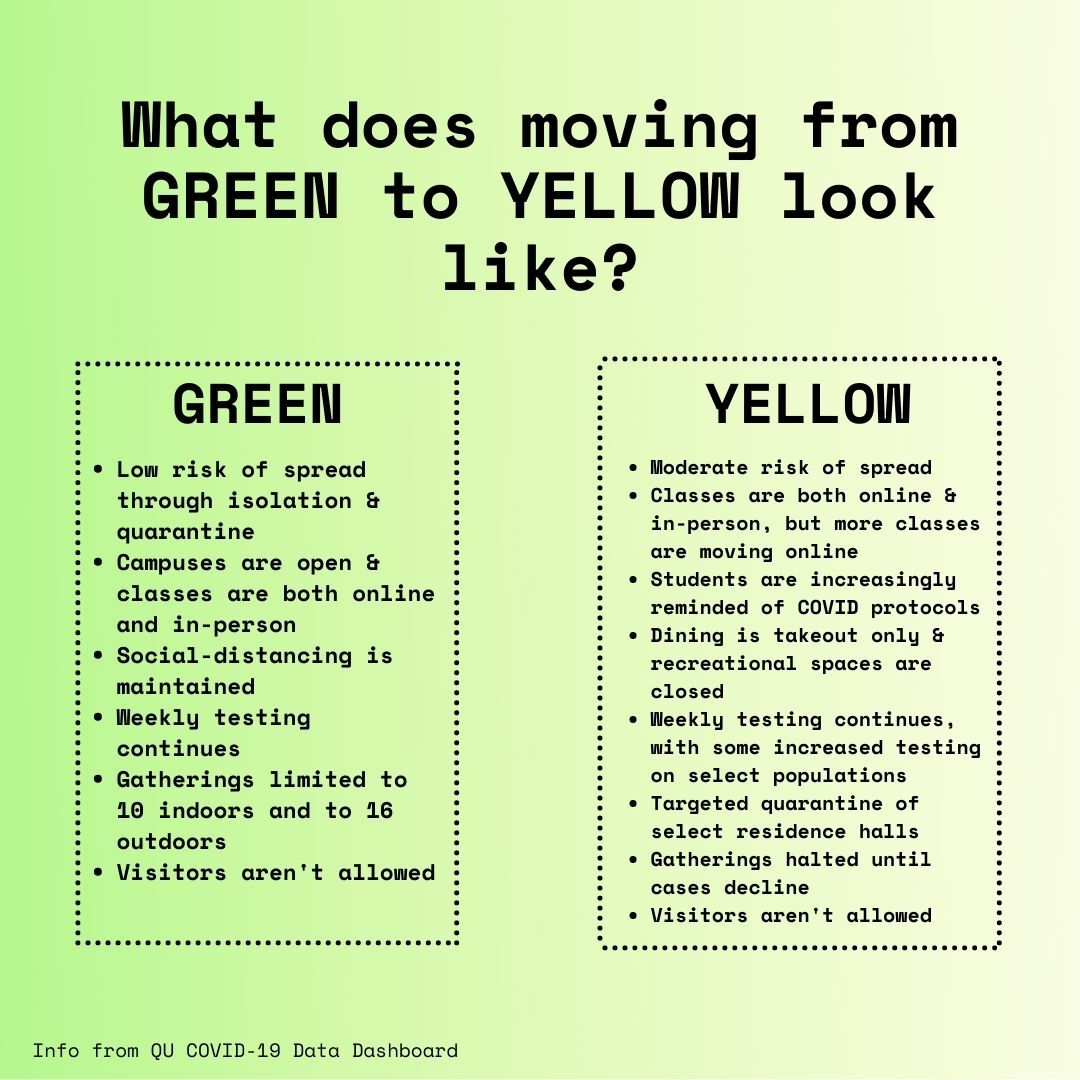After weeks of low positivity rates and case numbers, Quinnipiac University will enter a yellow alert level following a spike in cases last week.
David Hill, senior medical adviser of Quinnipiac University’s COVID-19 task force, addressed the change from green to yellow alert level in his weekly press briefing on April 9.
Green alert level means there are few positive cases and campus activities can take place, as long as they follow guidelines. Yellow alert level means that while there are still few positive cases, trends indicate the possibility of an increase in transmission.
Additional containment measures are implemented in the yellow alert level, such as increased messaging to students and the possibility of student-organized and Quinnipiac-organized gatherings going virtual.
“Yellow alert is heightened control for those coming to campus,” Hill said. “We feel we have really good parameters for when visitors can come to campus, both on tours and for athletic events and graduation.”
The university recently relaxed rules allowing students to travel between different dormitory halls while still following capacity limits. The uptick of cases, however, forced the university to reevaluate. Currently, travel between dorms is prohibited.
For some students, this change means very little.
“It doesn’t really affect me, because I spend most of my time by myself,” said Renee Fontaine, a freshman residential student. “It’s official that I can’t go to someone else’s dorm now, but I didn’t really do that before.”

Hill said that the restrictions on dorms may continue for one more week to make sure the incubation period from Easter and Passover weekend is exceeded.
Amy Jespersen, a freshman who lives on campus, thinks the holiday weekend was not the only factor that contributed to the increase in cases.
“I think going home for Easter was a factor, but also the relaxing of dorm rules,” Jespersen said. “The university allowed it.”

Hill said the increase in cases isn’t as cut-and-dry as students travelling between dorms.
“A residential student goes off campus and gets exposed somewhere,” he said. “They go to a party, they go to a bar, somewhere where they’re not exercising protection. It’s not complicated. We just need to encourage students to be responsible.”
Orange alert level, which succeeds yellow, would indicate even more positive cases on campus and could result in quarantining of entire dormitories.
“If it continues to spread, we’ll look at where it’s spreading,” Hill said. “We might quarantine dorms again. We don’t want to do that, but we might have to do that.”
If an orange alert level is reached, graduation plans could possibly be in jeopardy.
Hill said if you test positive within 10 days of graduation, you can’t walk in the ceremony. If you are in contact with someone who tests positive within 10 days, you also can’t walk.
“We’re trying to do all we can now before exams and graduation,” he explained. “We all need to come together to get through these next few weeks.”

